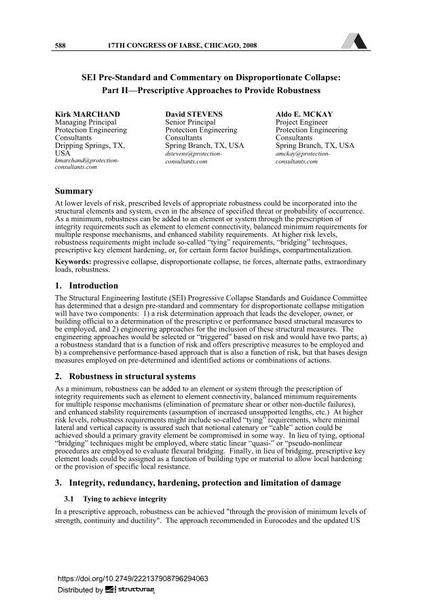SEI Pre-Standard and Commentary on Disproportionate Collapse (Part II)
Prescriptive Approaches to Provide Robustness

|
|
|||||||||||
Bibliographic Details
| Author(s): |
Kirk Marchand
David Stevens Aldo McKay |
||||
|---|---|---|---|---|---|
| Medium: | conference paper | ||||
| Language(s): | English | ||||
| Conference: | 17th IABSE Congress: Creating and Renewing Urban Structures – Tall Buildings, Bridges and Infrastructure, Chicago, USA, 17-19 September 2008 | ||||
| Published in: | IABSE Congress Chicago 2008 | ||||
|
|||||
| Page(s): | 588-589 | ||||
| Total no. of pages: | 9 | ||||
| Year: | 2008 | ||||
| DOI: | 10.2749/222137908796294063 | ||||
| Abstract: |
At lower levels of risk, prescribed levels of appropriate robustness could be incorporated into the structural elements and system, even in the absence of specified threat or probability of occurrence. As a minimum, robustness can be added to an element or system through the prescription of integrity requirements such as element to element connectivity, balanced minimum requirements for multiple response mechanisms, and enhanced stability requirements (assumption of increased unsupported lengths, etc.) At higher risk levels, robustness requirements might include so-called “tying” requirements, “bridging” techniques, prescriptive key element hardening, or, for certain form factor buildings, compartmentalization. |
||||
| Keywords: |
robustness progressive collapse disproportionate collapse extraordinary load tie forces alternate paths
|
||||
